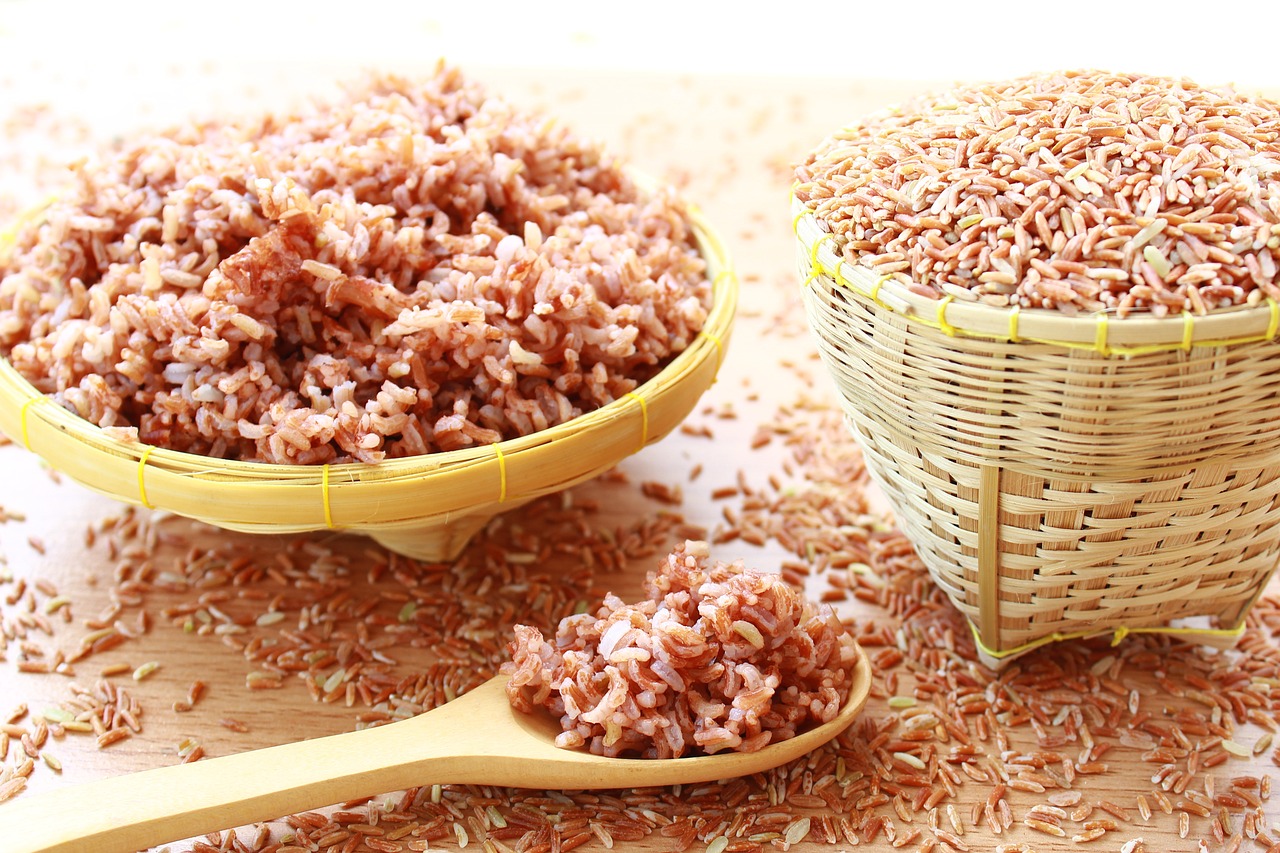It is brown, tastes nutty, is filling for a long time and contains vitamins and minerals that have been removed from white rice. Why is brown rice so healthy?
Preparing brown rice
It has a bite, tastes a little nutty, and its glycemic index is pleasingly low, which therefore keeps you full for a long time. Brown rice is still an insider tip in the kitchen. Not to be confused with wild rice. And yes, there is even the fragrant basmati rice as brown rice, including the nutrient-rich silver skin. It’s time to spread the word about how healthy brown rice is.
What is brown rice?
Brown rice is, as the name suggests, a natural product. All the complex processing steps required to produce bright white rice are omitted. The starch grain remains enclosed in the bran, germ and aleurone layers, i.e., the rice husk.
Brown rice is not milled, so it looks light to deep brown.
Brown rice is the whole grain version of white rice: different taste, different preparation and different nutrients! It is available as round-grain and long-grain rice.
Why brown rice is so healthy
Wholegrain rice has more vitamins, minerals and unsaturated fatty acids than white rice. Almost half of the fat content of brown rice is accounted for by polyunsaturated fatty acids, which are essential for maintaining our cells and a functioning cardiovascular system, among other things.
Due to its fiber content, brown rice stays in the stomach longer and requires our digestive system to work much harder to release its ingredients for the cells and tissues. This keeps you feeling full for longer and prevents cravings.
The starch inside is not converted into sugar as quickly and the blood sugar level is raised much less than with white rice. This also reduces the risk of diabetes.
Arsenic in brown rice
Unfortunately, brown rice may also contain more arsenic. The magazine Ökotest carried out a major pollutant check on a large number of rice manufacturers and discovered various heavy metals, including arsenic in particular, in wholegrain rice. Only two products received a satisfactory rating: “Holo Camargue long grain brown rice, organic” and “Dennree long grain brown rice, organic”. All other rice products were worse.
Brown rice: nutritional values and ingredients
Ingredients per 100 grams
Energy: 349 Kcal
Carbohydrates: 74.1 g
Fat: 2.2 g
Protein: 7.2 g
Dietary fiber: 2.2 g
Vitamin B1 (410 ug)
Vitamin B6 (670 ug)
Niacin (5200 ug)
Magnesium 175 mg
Phosphor 325 mg
Preparing brown rice
Brown rice is great for anyone who is vegetarian or vegan and wants to lose weight. It fills you up for longer and contains lots of healthy ingredients. It is not used for sushi; this may change, of course.
You can prepare it in two very different ways: boil it normally in water and cook it in the oven. The first two steps are the same for both preparation methods:
Wash the rice! This is a crucial step that is skipped far too often. Washing rinses excess starch from the rice grain and thus shortens the cooking time. Nutrients are not lost in the process.
For four portions of brown rice, boil 250 g of rice with twice the amount of water and 0.5 teaspoon of salt. Bring the rice to a boil and simmer over high heat for about 10 minutes.
Preparation option 1: Cooking brown rice on the stove
Reduce the heat to medium and leave the rice to simmer for another 20 minutes. Stir occasionally so that the rice does not stick too strongly to the bottom of the pan.
At the end of the cooking time, after about 30 minutes, the cooking water should have been completely absorbed by the rice. You can now remove the pan from the heat, stir the rice again and leave it to cook for a further 5-7 minutes with the lid on.
Preparation option 2: Cooking brown rice in the oven
Place a lid on the pot and put it in the oven at 200 degrees. The pot must, of course, be heat-resistant, including the handles.
Brown rice takes about an hour to soften using this cooking method.
Brown rice should always be cooked using the swelling method, which means that only as much water is used as the rice absorbs. If rice is cooked in a lot of water and then drained, all the good nutrients and flavorings go down the drain.
Storage tip for brown rice
Whether dry or cooked, brown rice should always be stored in the fridge. Dry rice becomes inedible more quickly because the fatty acids in the outer husk quickly taste rancid. Regardless of the type of rice, cooked rice should be put in the fridge as soon as possible if there are any leftovers. This is the best way to prevent nasty food pathogens from spreading.
What goes well with brown rice?
Vegetable stir-fries and healthy bowls, such as the Poké Bowl, work really well. Crunchy varieties such as green asparagus, peppers, carrots or sugar snap peas are particularly great when choosing vegetables. However, brown rice also cuts a fine figure as a soup garnish or in a wok. If you want an even nuttier flavor, you can simply roast a few nuts—walnuts, pecans or cashews, for example—briefly and mix them into the rice.
Where can you buy brown rice?
With a bit of luck, brown rice can be found in well-stocked supermarkets or drugstores. However, you are sure to find it in organic stores, Asian shops and good old health food stores. So far, brown rice is not a mass-produced product; it would be healthier and more environmentally friendly!
source: fitforfun.de/picture: Bild von Bom taraissara auf Pixabay
This post has already been read 1485 times!



